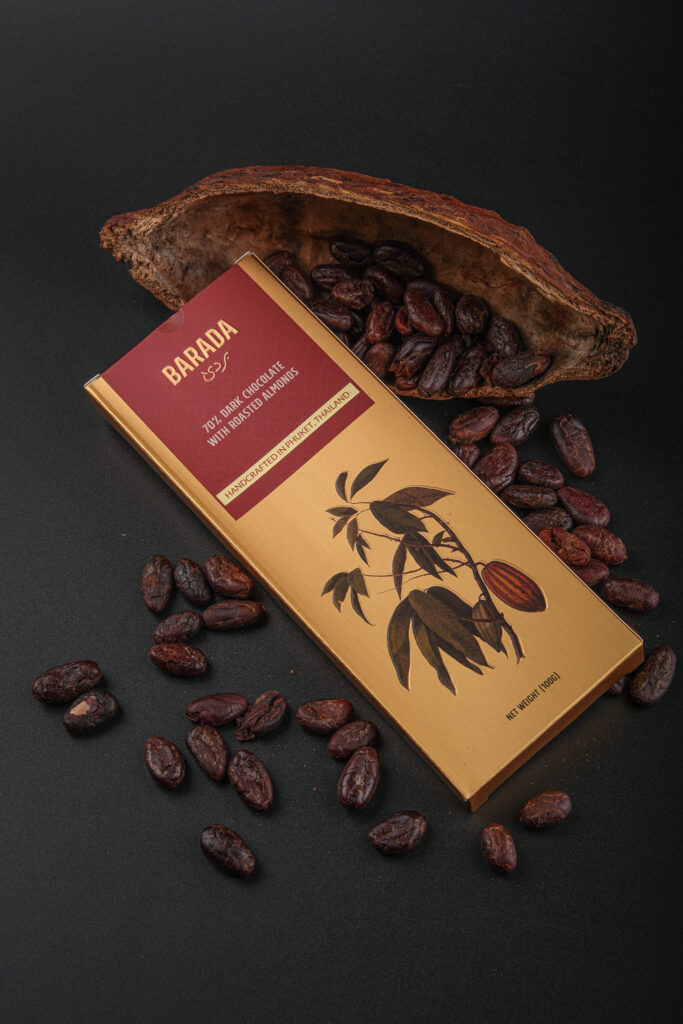Chocolate, with its rich, indulgent taste, is a beloved treat enjoyed by millions worldwide. But have you ever stopped to ponder what gives chocolate its distinct flavor? The answer lies in the humble cocoa bean. In this blog, we’ll delve into the fascinating world of cocoa beans and their pivotal role in shaping the taste of chocolate.
Varietal Differences
Just as different grape varieties give rise to various wine flavors, cocoa beans from different cacao tree varieties offer unique taste experiences. Criollo beans, known for their mild, nuanced flavors, provide a delicate chocolatey experience. On the other hand, Forastero beans boast a robust, slightly bitter taste, adding depth to chocolate creations. Trinitario beans, a hybrid of Criollo and Forastero, strike a balance between the two, offering a harmonious blend of flavors. Understanding these varietal differences is crucial for chocolate connoisseurs and artisans alike, as they form the building blocks of chocolate flavor profiles.
Terroir Influence:
The concept of terroir, often associated with wine, extends to cocoa beans as well. Terroir encompasses various environmental factors, including soil composition, climate, altitude, and proximity to water bodies, which influence the growth and flavor development of cocoa beans. For instance, beans grown in the Caribbean may exhibit fruity or floral notes, while those from South America might showcase earthy or nutty undertones. This interplay between nature and cultivation adds depth and complexity to chocolate flavors, making each batch a unique sensory experience.
Processing Methods
Fermentation
Fermentation is where the magic begins. After harvesting, cocoa beans are placed in fermentation boxes or heaps, where natural microorganisms kick-start the fermentation process. This stage is vital as it breaks down the beans’ pulp, activates enzymes, and initiates biochemical reactions that transform the beans’ flavor precursors into aromatic compounds. Properly controlled fermentation not only reduces bitterness and acidity but also enhances desirable flavor notes such as fruitiness, nuttiness, and floral aromas. Chocolate makers carefully monitor factors like temperature, duration, and aeration to achieve the desired flavor profile.
Drying
Once fermentation is complete, the beans are spread out to dry. Drying is a critical step that preserves the flavor compounds developed during fermentation while reducing moisture content to prevent mold growth. Beans are traditionally dried under the sun or using mechanical dryers, with attention paid to airflow and temperature control. Proper drying ensures that the beans retain their nuanced flavors and textures, laying the foundation for high-quality chocolate.
Roasting
Roasting is where the flavor transformation reaches its peak. This process involves heating the dried cocoa beans to develop depth, complexity, and aroma. Roasting temperatures and durations vary depending on the desired flavor profile, with higher temperatures typically leading to bolder, more pronounced flavors. During roasting, Maillard reactions occur, leading to the browning of sugars and proteins and the formation of new flavor compounds. Additionally, roasting can introduce caramelization notes and roasted nuances, adding layers of complexity to the chocolate. Chocolate makers meticulously monitor the roasting process, adjusting parameters to achieve the perfect balance of flavors and aromas.
Grinding and Conching
After roasting, the beans are cracked and winnowed to remove the outer shell, leaving behind the cocoa nibs. These nibs are then ground into a smooth, viscous paste known as chocolate liquor. Grinding reduces the particle size of the cocoa solids, ensuring a smooth texture and releasing more flavor compounds. The chocolate liquor is then subjected to conching, a process that further refines the texture and flavor of the chocolate. Conching involves kneading the chocolate at controlled temperatures for hours or days, allowing volatile acids and bitter compounds to evaporate while promoting flavor development and mouthfeel. The result is chocolate with a velvety texture and well-rounded flavor profile.
Tempering and Molding
The final steps in chocolate making involve tempering the chocolate to ensure proper crystallization and molding it into bars or other shapes. Tempering involves carefully heating and cooling the chocolate to stabilize the cocoa butter crystals, resulting in a glossy finish and satisfying snap. Properly tempered chocolate has a smooth texture and melts evenly on the palate, enhancing the overall tasting experience. Chocolate makers employ various techniques, such as seeding or tabling, to achieve the desired tempering effect.
Conclusion
Cocoa beans are the unsung heroes behind the delectable flavors of chocolate. From varietal differences to terroir influence and processing methods, every aspect of cocoa bean cultivation and processing contributes to the rich tapestry of chocolate flavors. Next time you indulge in a piece of chocolate, take a moment to appreciate the journey of the humble cocoa bean and the


Excellent chocolat noir , long en bouche, peu sucré, très naturel. Bravo.
Thank you 🙂